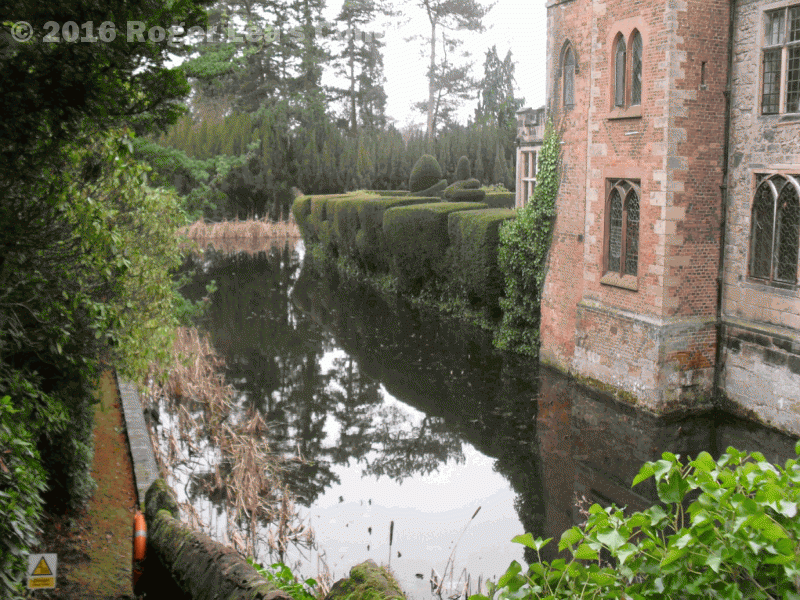Commenting on the number of pools, ponds, moats and other water features in Sutton Coldfield, the archaeologist Mike Hodder wrote in a recent article “In some cases groups of pools, sometimes accompanying moats surrounding buildings, may have been created or adapted to form a “watery landscape” to enhance the setting of high-status dwellings, in addition to their practical purpose”.
The most striking example of this status conferred by water is the splendid moat at New Hall. Fashion demanded that the Lord of the Manor’s big house in Sutton must have a moat, but it proved physically impossible to create a moat round the existing manor house which dated from before the Norman Conquest and stood near the summit of Manor Hill. At some time in the early thirteenth century the Earl of Warwick, Lord of the Manor of Sutton Coldfield, moved his Sutton Headquarters from the Manor House to a new site with a moat, still known 700 years later as New Hall.
Mike Hodder points out that the old Saxon manor house nevertheless had a watery setting, as it overlooked a string of pools from Wyndley Pool through Cross Pool (situated where the Leisure Centre now stands) to the mill pool (now the Gracechurch Centre). These pools “gave the manor house a watery setting that more than compensated for the lack of a moat around it”
Other medieval examples are Peddimore Hall and Langley Hall. At Peddimore you can still see the double moat, the outer one is narrow on three sides then widens to become a rectangular pool on the north-west side. This expansive stretch of water served as a fishpond but would also have enhanced the setting of the building. There is now no trace of the house that was once second only to the Manor House in Sutton, Langley Hall, or of its watery landscape, but archaeological research shows that it too had considerable pools nearby as well as a moat.
Wealthy families still coveted a stretch of water to add to their estates in the eighteenth century, Four Oaks Hall obtained long lease of nearby Bracebridge Pool and Duncomb of Moat House rented Blackroot. At Ashfurlong Hall, a farmhouse converted into a gentleman’s country seat in 1800, Mike Hodder found evidence of several artificial lakes.
Mike Hodder’s article is published in the Proceedings of the Sutton Coldfield Local History Research Group, details of which can be found on the Group’s website, www.sclhrg.org.uk - on this website you can also catch up on and read over 400 Observer “History Spots”, including the first one from the issue of May 2 2008.
